The color of grace, sweetness, and joy, pink always looks breathtaking and awe-inspiring in the flower garden. Pink perennial flowers add a soft touch, a gentle blissfulness, and enchanting aura to the landscape like no other color does. The ranges of pink are captivating, from brilliant and flashy hot pink flowers to soft and charming baby pink blooms. Including pink flowers in the landscape is easy because there is almost an endless source of options.
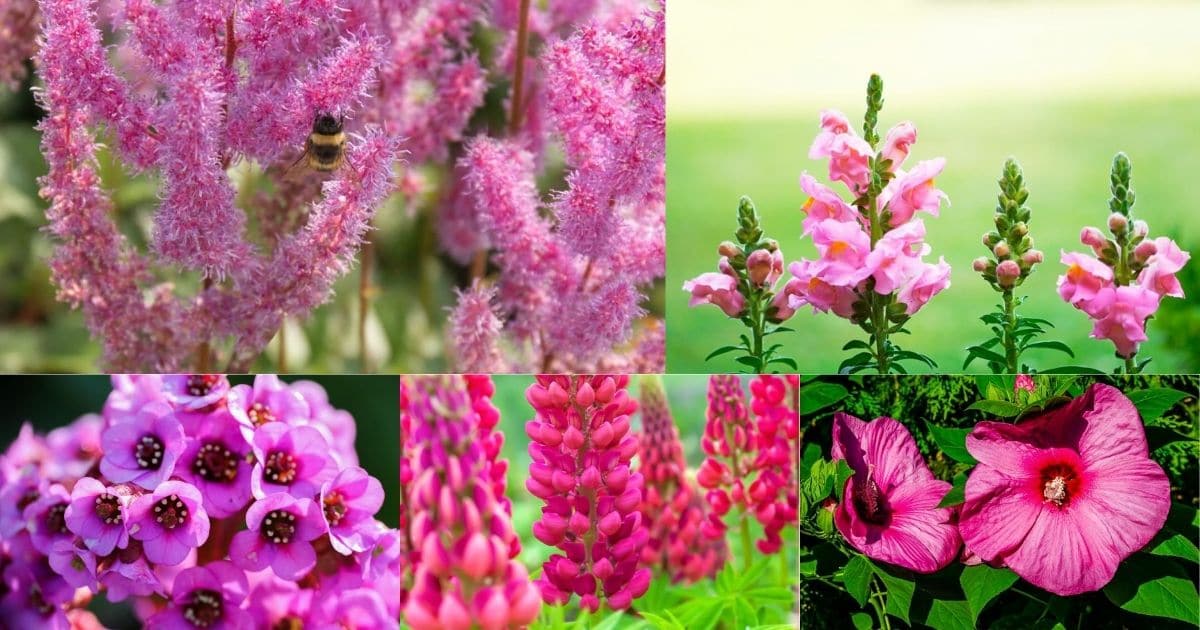
There are a lot of pink flowers to choose from; it is one of the most popular flower colors. You'll notice some of the classics, like mums, carnations, dahlias, and roses, aren't included in this list. With so many pink perennials to choose from, we think it's time to step away from the tired classics and incorporate more diversity into the landscape design.
Jump to:
Ways To Use Pink Perennials
Pink is a blushing color, an option that accentuates the landscape around it without stealing the show. Even the brightest hot pink or magenta blooms don't quite demand the same attention as a bright red or orange flower. Pink is always a little muted, which is why it's perfect for creating emotion, instilling feelings of youth, innocence, and sweet romance into a landscape that darker colors and sharper edges could easily overrun.
Use pink perennial flowers to add elegance and dignity to the garden, with a hint of playfulness and charm.
Rose Campion (Lychnis coronaria)
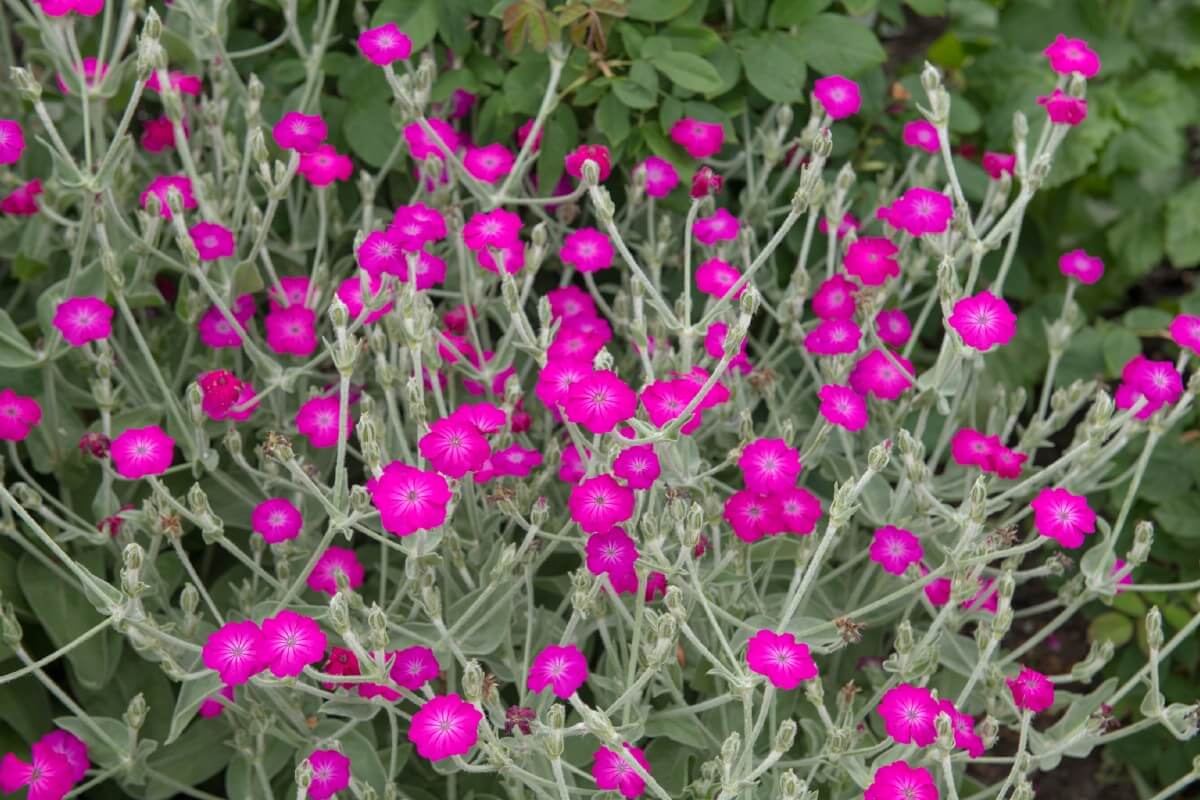
A perfect perennial with stunning magenta-pink flowers, Rose Campion has it all. This flower is fuss-free, attractive throughout the seasons, and produces profuse little hot pink flowers. Rose Campion foliage is just as appealing as the flowers; the low-growing stalks are erect, thin, and silvery green with very few leaves. When in bloom, Rose Campion flowers grow at the top of the stems, creating a sea of brilliant color that lasts from late spring through summer.
- Hardy to zones 3-8
- Full sun or partial shade
- Deer resistant
- Drought tolerant, tolerates poor soil
Bergenia (Bergenia sp.)
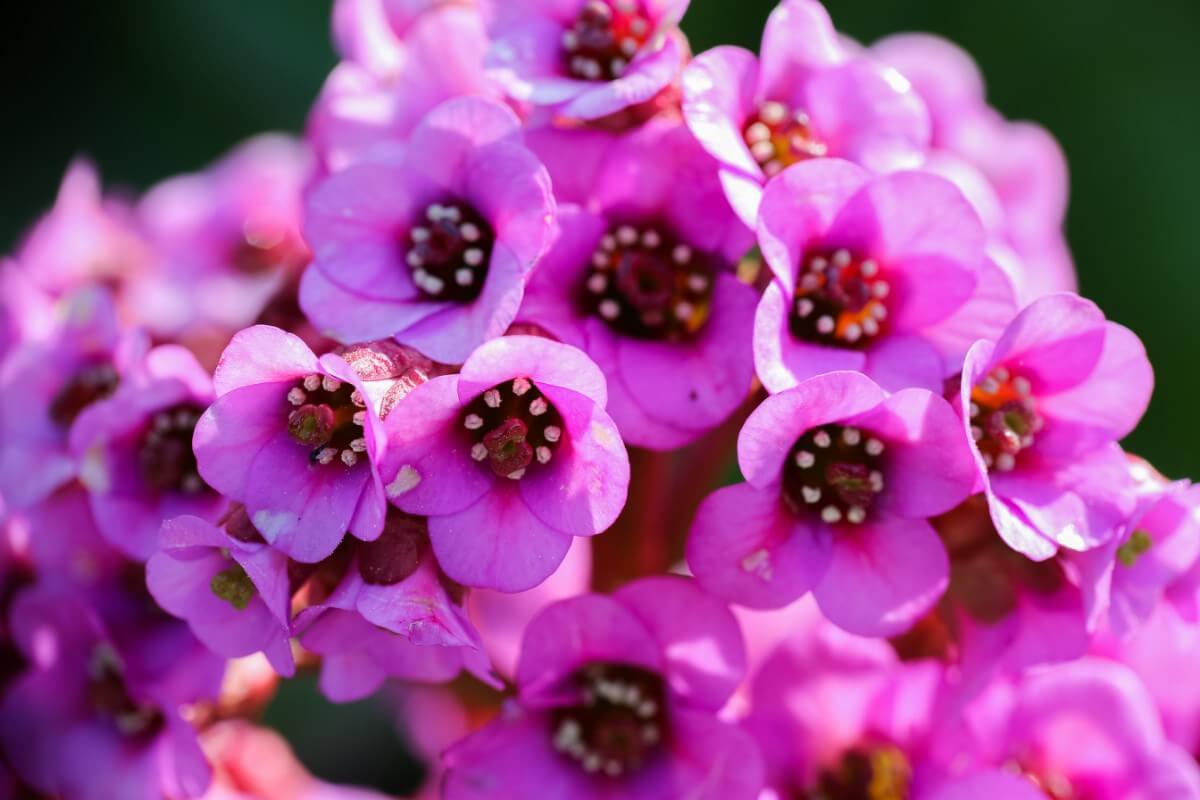
This low-growing perennial provides lots of sweet pink coloring to the landscape. Bergenia flowers grow on tall stems above the large-leaved foliage, creating an attractive and elegant aesthetic in early spring. This perennial is grown for its ample leathery-looking foliage as well as the flowers; it's an excellent plant for year-round interest. Bergenia flowers range from soft pink to deep almost-purple pink, and there are lots to choose from. This is also a super hardy and fuss-free plant, an excellent choice for borders, flower beds, rock gardens, and walkways.
- Fringed Bergenia (B.ciliata) grows 9-12 inches tall and has pale pink flowers.
- Heartleaf Bergenia (B.cordifolia) flowers are dark pink, and the leaves are heart-shaped. Grows 12-18 inches tall.
- Winter-Blooming Bergenia (B.crassifolia) flowers are purplish-pink. It grows 12-18 inches tall and blooms in late winter/early spring.
- Elephant Ears Bergenia foliage ranges from dark green to purplish-black, and the flowers come in pink, magenta, and dark purple-pink.
- Full sun, partial shade, or full shade
- Hardy to zones 3-8, depending on species
- Deer and rabbit resistant
Lupine (Lupinus sp.)
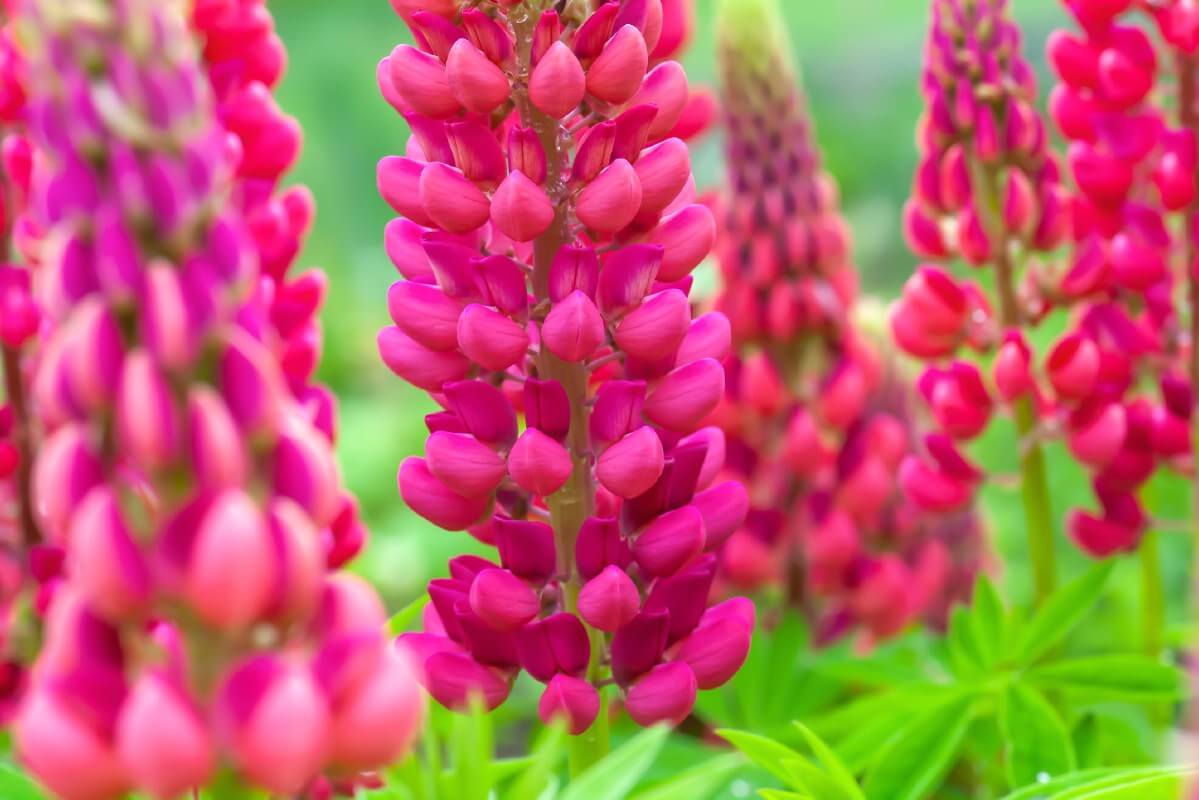
The tall, erect stems densely covered with pea-shaped flowers, and the extremely attractive palmate foliage make Lupines a top landscape choice. Lupines come in a wide range of colors and growth habits, and there are some superb pink options. Most Lupines average 3-4 feet tall, but there are some dwarf types, as well. This spring-blooming perennial is striking in the garden, attracting all the pollinators, especially hummingbirds and butterflies. The long blooming season of Lupines only adds to their attraction; they look especially stunning planted in large groupings.
- Pink blooming Lupines: The Chatelaine (baby pink), Gallery Pink (deep pink), Mini Gallery Pink Bicolor (pink/white), Pink Fairy (soft pink/white), Popsicle Pink (lipstick pink), Pink Flamingo (dark pink)
- Hardy to zones 4-7
- Full sun
- Deer and rabbit resistant
Hummingbird Mint (Agastache sp.)
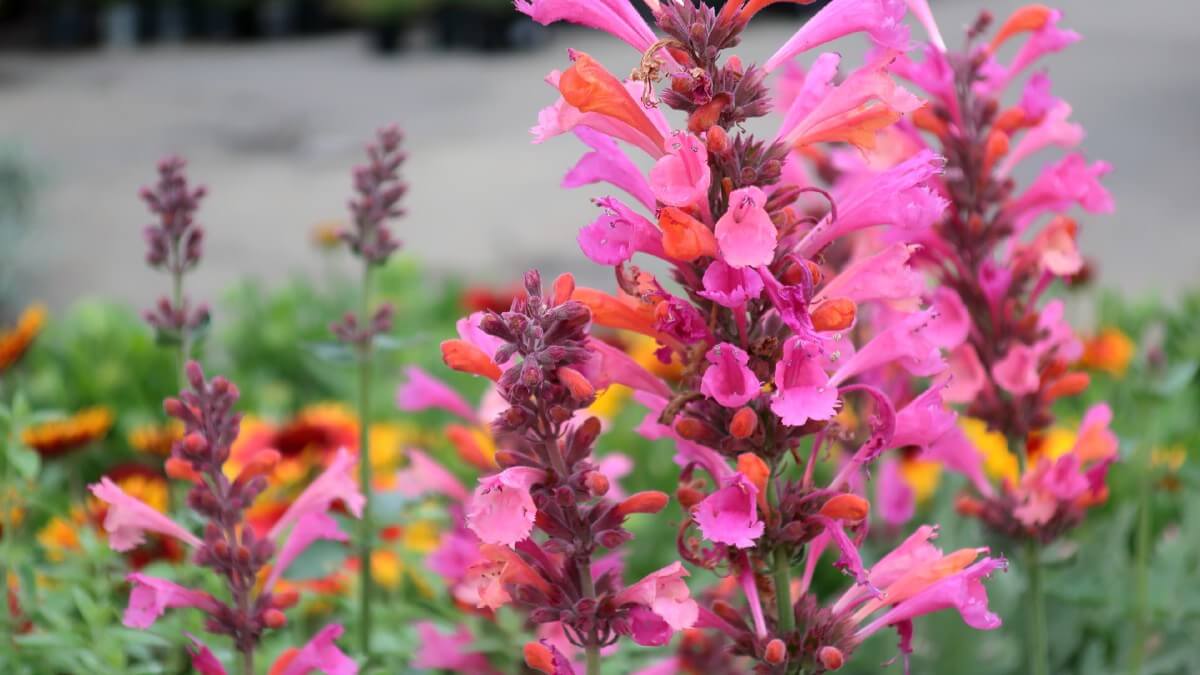
Sweet mint-scented leaves combined with beautiful pink flowers make this perennial a must for the garden. And, the name is accurate; hummingbirds love it as much as we do. Hummingbird Mint is available in a vast array of colors, but we think the pink ones are some of the best. The tall spikes of tiny tubular flowers are irresistible, and they bloom profusely and for weeks on end during the summer and even into fall. Hummingbird Mint flowers are delicate looking, adding a natural gentleness to the landscape that is complimented by their low-maintenance needs and hardiness.
- Pink blooming Hummingbird Mint: Kudos Coral (very dark pink), Kudos Ambrosia (rose pink), Tutti Frutti (raspberry pink), Rosie Posie (pink/purple), Raspberry Nectar (deep pink), Morello (dark rose),
- Hardy to zones 5-10
- Full sun
- Drought resistant
- Deer and rabbit resistant
Astilbe (Astilbe sp.)
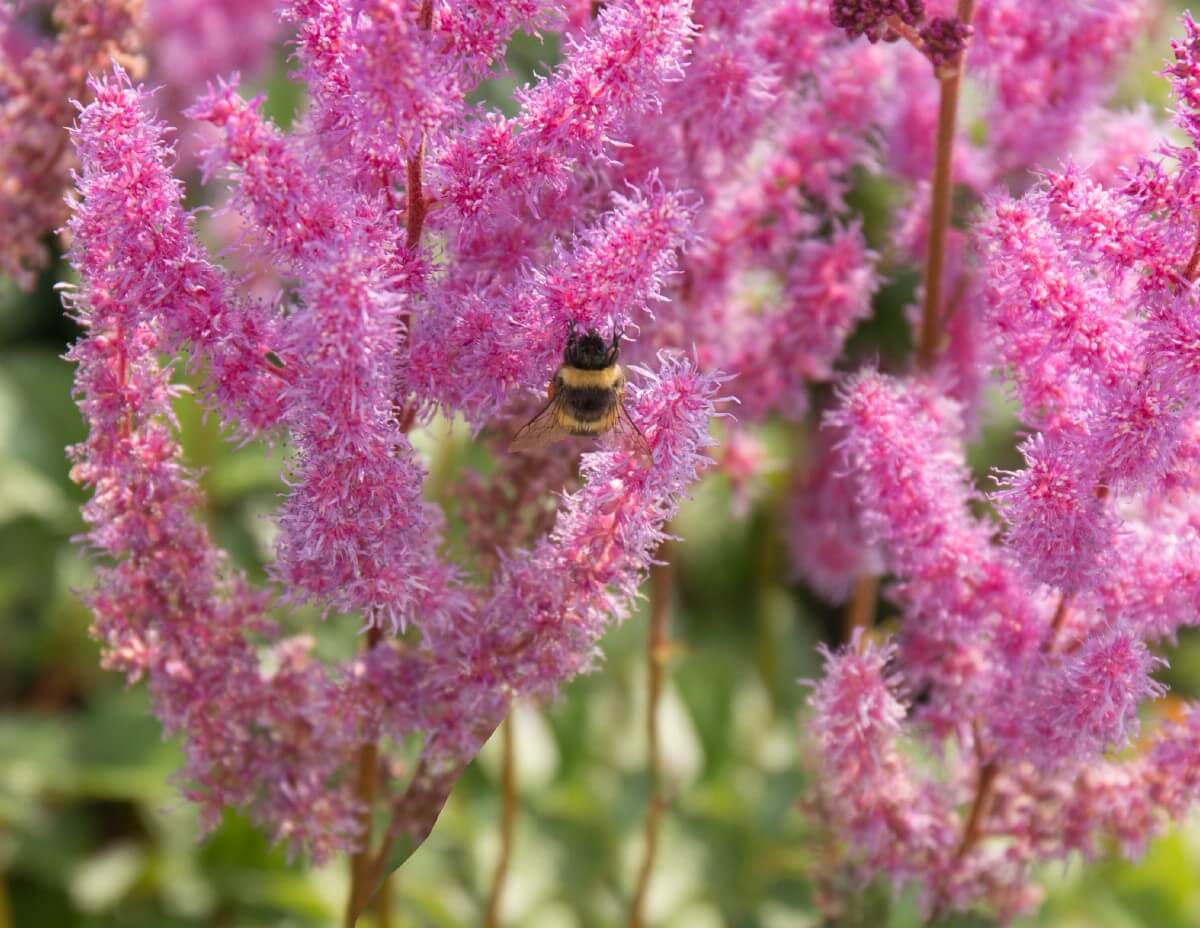
The tall feathery pink flower plumes of Astilbe add a genuinely romantic feeling to the landscape. Astilbe blooms look like giant puffs of color rising up from the foliage, elegant and graceful against the dark green textured foliage. Each flower plume is comprised of hundreds of tiny densely packed flowers which bloom all summer long. Butterflies love Astilbe as much as we do. This perennial flower prefers shade, and it is ideal for shade gardens, borders, and edges. Astilbe is available in many colors, including some incredible pinks.
- Pink blooming Astilbe: Drum and Bass (dark pink), Country and Western (rose pink), Hyacinth (lavender-pink), Little Vision in Pink (rich pink), Alive and Kicking (dark rose pink), Rhythm & Blues (raspberry pink), Wonderful Day (baby pink)
- Hardy to zones 4-9
- Partial shade or full shade
- Deer and rabbit resistant
Hardy Hibiscus (Hibiscus moscheutos)

When you need that tropical vibe but don't live in the jungle, Hardy Hibiscus delivers in abundance. The massive open-faced dinner-plate size blooms of Hardy Hibiscus are intoxicating in color, size, and prolificness. Hardy Hibiscus is a native perennial shrub that averages 2-5 feet tall and comes in many color combinations, including some truly spectacular pink versions. Butterflies, bees, and hummingbirds will be thrilled if you include Hardy Hibiscus in the landscape, and we know you'll be happy, too. When in bloom, this perennial is literally covered with massive flowers.
- Pink blooming Hardy Hibiscus: Luna Pink Swirl (strawberry pink), Brandy Punch (lipstick pink), Disco Belle Pink (bicolor pink/white), Peppermint Schnapps (light pink/dark pink), Mocha Moon (pale pink/dark pink), Southern Belle (rose pink/dark pink)
- Hardy to zones 4-9
- Full sun
- Drought, heat, and humidity tolerant
- Native to the Midwest, Northeast, Southeast, and Southwest
Rose of Sharon (Hibiscus syriacus)

Because there is no such thing as too many Hibiscus plants, the Rose of Sharon is another must in the landscape. Rose of Sharon and Hardy Hibiscus are very similar, producing those spectacular large tropical open-faced and brightly colored flowers that we adore. The main difference between the two is growth form and flower size. Rose of Sharon grows like a tree, easily reaching 10-12 feet high, while Hardy Hibiscus is shrub-like and dies back every year. It generally doesn't grow larger than 6 feet tall.
Additionally, Rose of Sharon blooms are smaller, averaging 3-6" wide as opposed to the dinner-plate-sized flowers of Hardy Hibiscus. The other big difference between these two favorites is that Rose of Sharon isn't native to North America, while Hardy Hibiscus is a native. Both are absolutely stunning in the garden, bold, bright, and colorful, unapologetically stealing the show wherever they are planted.
- Pink blooming Rose of Sharon: Pink Chiffon (pale pink, semi-double), Blush Satin (soft pink), Blushing Bride (very light pink), Collie Mullens (dark rose pink), Lil' Kim (deep pink)
- Hardy to zones 5-8
- Full sun
- Drought, heat, and humidity tolerant
- Deer resistant
Snapdragon (Antirrhinum majus)
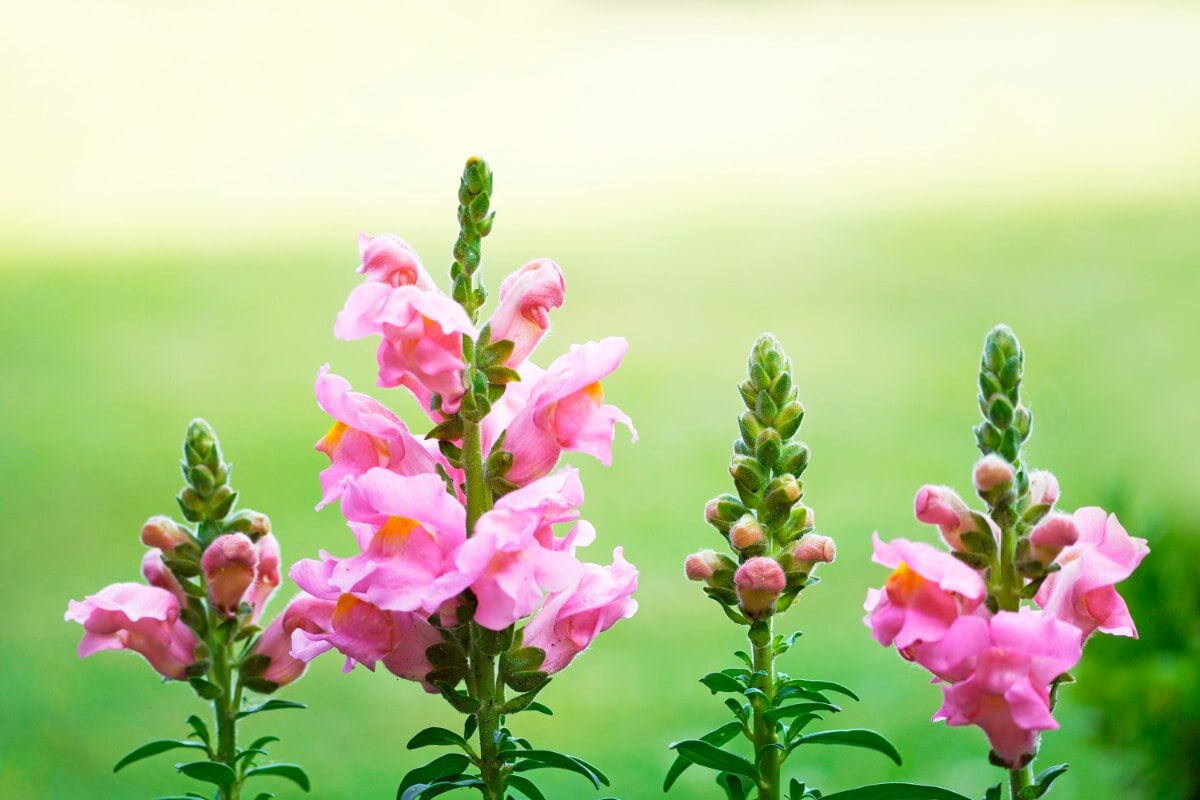
An eye-catching flower that blooms for months, Snapdragons add elegance and intrigue to the garden. Like most cultivated flowers, Snapdragons are available in various colors, and there are some wonderfully bright and beautiful pink varieties. Snapdragons are so-named because if you lightly squeeze the flowers, they open up like a dragon's mouth.
This sweet perennial loves cool weather and often will slow down or stop blooming in the heat of the summer, only to revive again in fall and start producing non-stop blooms again. Butterflies and hummingbirds, in particular, adore Snapdragons, as do bees and other vital pollinators.
- Pink blooming Snapdragons: Calima Pink (soft pink), Sonnet Rose (bright rose pink), Admiral Pink Bicolor (light pink/white), Arrow Pink (bubblegum pink), Potomac Pink (baby pink), Chantilly Light Pink (pale pink), Appleblossom (white/pink),
- Hardy to zones 5-10
- Full sun
- Deer resistant
Speedwell (Veronica sp.)
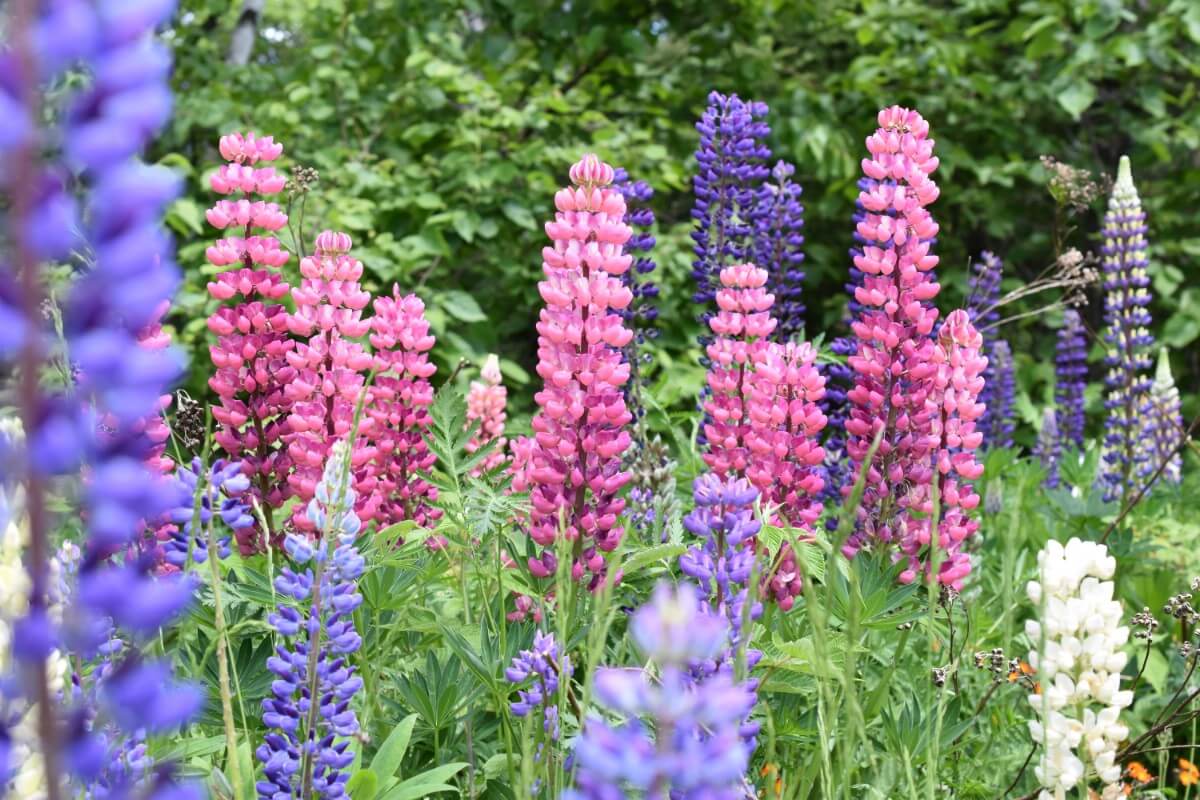
Tall spikes of star-shaped pink flowers rising from bushy green foliage like giant paintbrushes, who could want more? Speedwell is a longtime garden favorite because of its showy behavior, fuss-free nature, and tendency to bloom for 6-8 weeks or more. The pink Speedwells are incredibly charming along walkways, borders, or used as cut flowers. Planted in large groupings, Speedwell makes quite the statement, and its one butterflies cannot resist. On breezy days, the flowers sway in the wind, dreamy and enchanting.
- Spiked Speedwell (V.spicata) – The hardiest Speedwell, rated for zone 3 and above, blooms mid-summer and averages 11-30 inches tall. Pink options include “Giles van Hees” (bright pink), “Erika” (pink/lavender)
- Garden Speedwell (V.longifolia) – The tallest of the Speedwells, Garden Speedwell averages 2-3 feet tall and is naturalized in many parts of North America. Hardy to zone 4 and above, it blooms in mid-summer. Pink varieties include “Fairy Tale” (pink), “Sonja” (bright pink), “Lila Karina” (dusky pink), “Perfectly Picasso” (hot pink), “First Love” (vibrant pink)
- Hybrids (usually a cross between spicata and longifolia) – “Pink Damask” (pastel pink), “Eveline” (magenta pink), “Aspire” (rose pink), “Pink Potion” (light pink), “Sweet Lullaby” (baby pink)
Pinks (Dianthus)
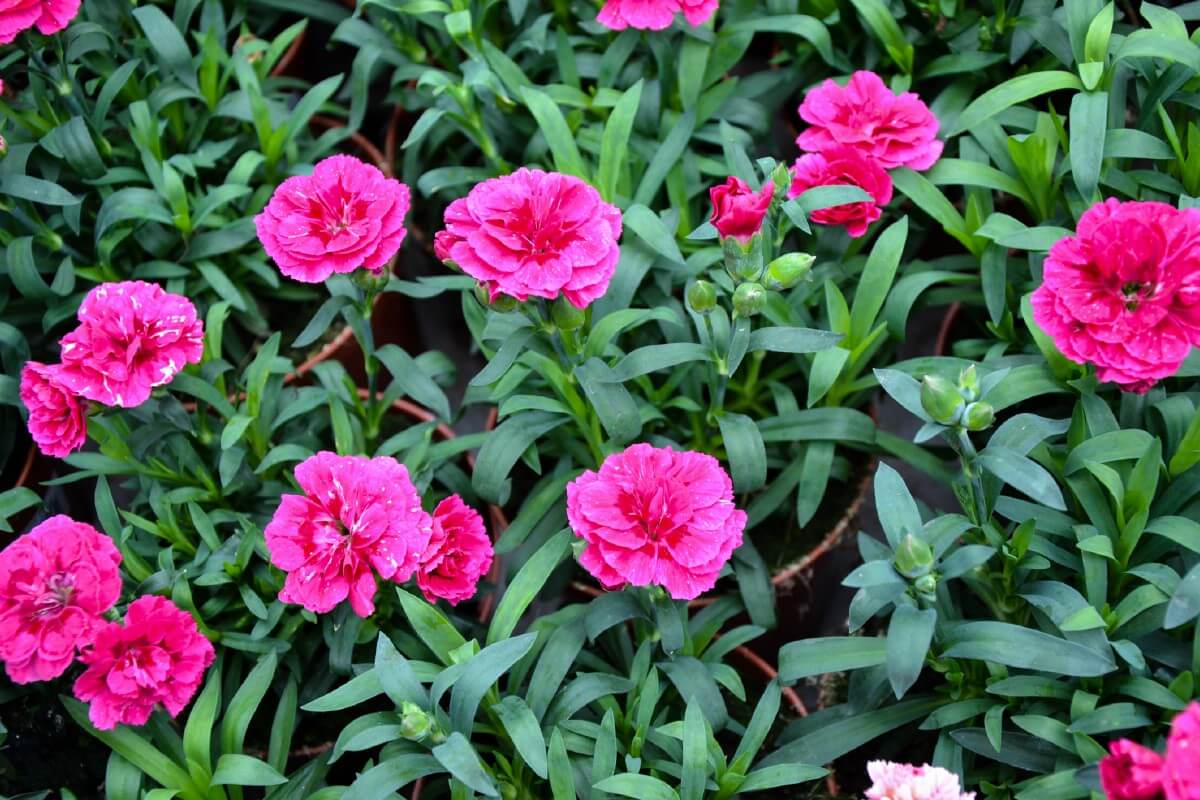
A list of pink perennials would not be complete without the ultimate pink flower; Dianthus! They are so perfectly and wonderfully pink that it is even their common name. If you are a devotee to the color pink, you must have at one variety of Dianthus in your landscape. We recommend a lot more than one, though!
Pinks are generally low-growing, mat-forming, and totally fuss-free. They are an ideal ground cover or filler plant, turning the yard into a carpet of pink wonder. Dianthus flowers come in a plethora of designs, most of them bicolor with pink and white or red swirls and markings. Many of them look painted; they are so detailed and intricate. On top of that, they have a sweet clove-like fragrance that will make the garden smell incredible.
- With over 300 species and countless cultivars and hybrids, and with almost all of them some shade of pink, it isn't easy to choose just a few Dianthus. However, these are some of our absolute favorites: Coral Reef (double, coral), Pinball Wizard (candy cane light/dark pink), Raspberry Surprise (semi-double, pink/burgundy), Candy Floss (double, light pink), Superstar (pink/red/white)
- Hardy to zones 3-9, depending on species
- Full sun
- Deer and rabbit resistant
Lungwort (Pulmonaria)
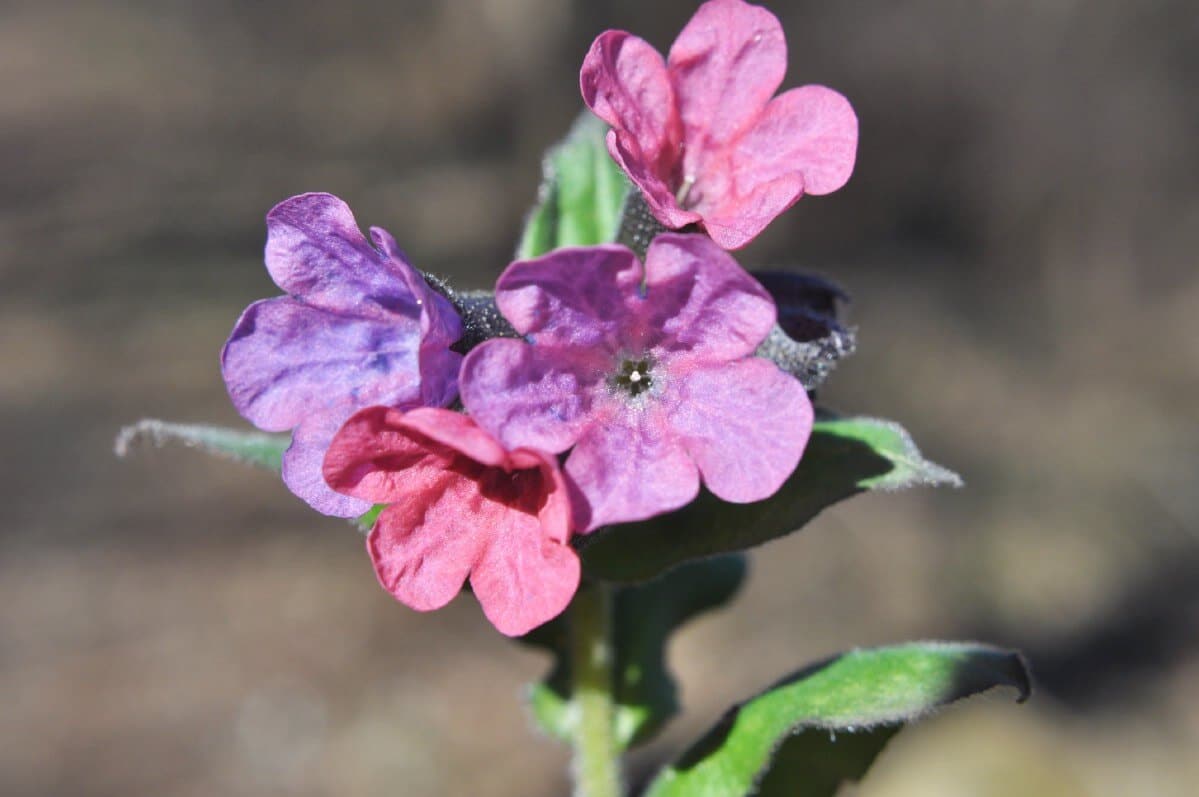
Bright pink flowers and intriguing eye-catching foliage make Lungwort a multi-functional landscape choice. The foliage is evergreen, so you can enjoy the speckled green leaves even when the flowers aren't in bloom. Lungwort flowers grow in tight clusters just above the foliage, and the contrast is vibrant and enchanting. Not all Lungworts have pink flowers, but the pink ones are really spectacular.
- Pink blooming Lungwort: Shrimps on the Barbie (bright pink), Pretty in Pink (rose pink), Raspberry Splash (pink/purple), Barfield Pink (pink/white)
- Hardy to zones 4-9
- Partial or full shade
- Deer and rabbit resistant


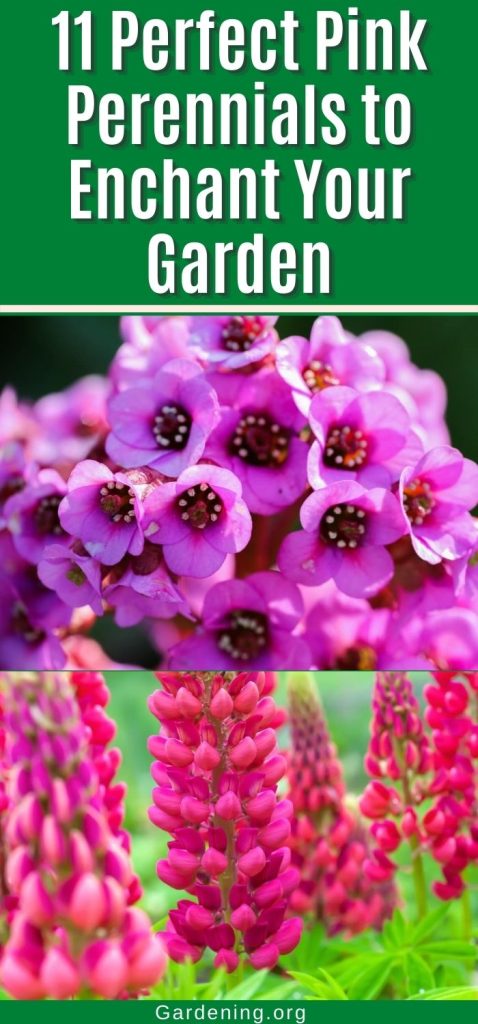
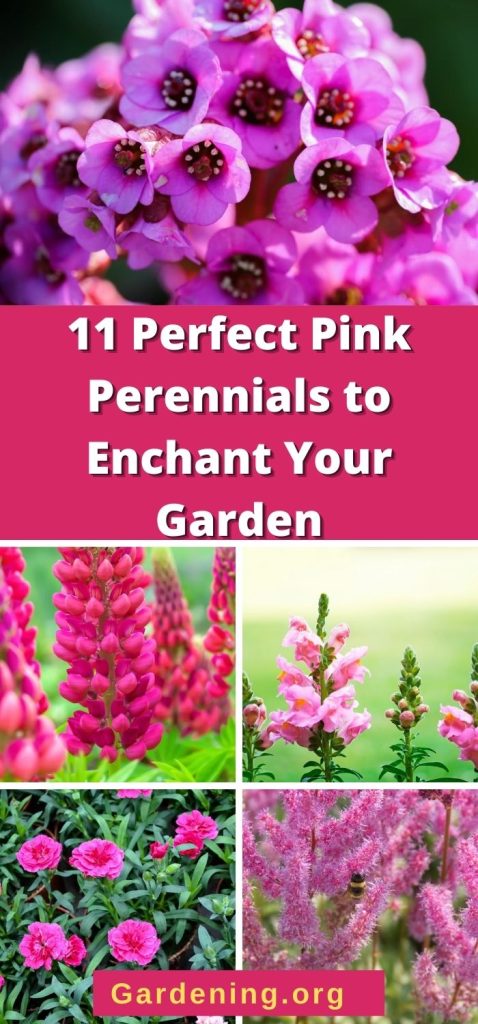
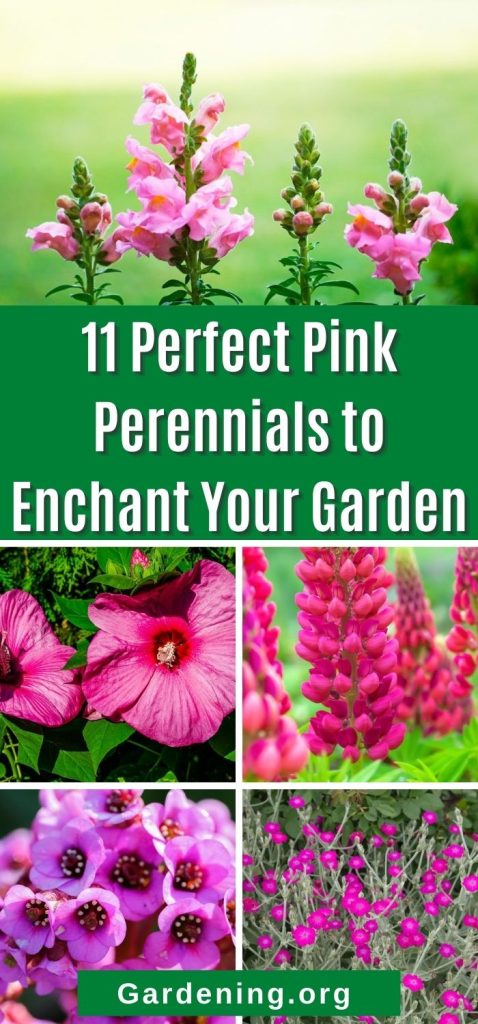
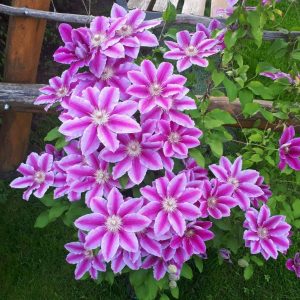
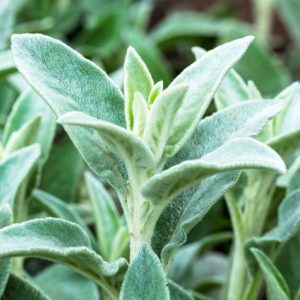
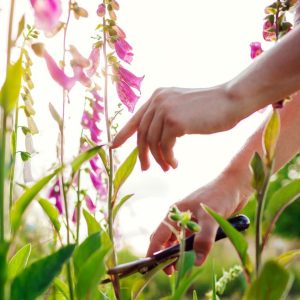
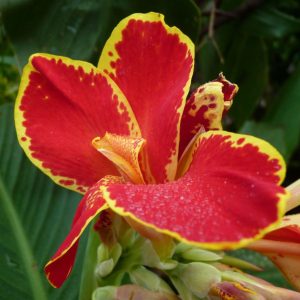
Leave a Reply